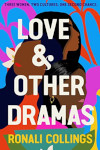Book Launch: Rosie Travers’ The Theatre Of Dreams
Posted 3rd August 2018
Category: Events Genres: N/A
Comments Off on Book Launch: Rosie Travers’ The Theatre Of Dreams
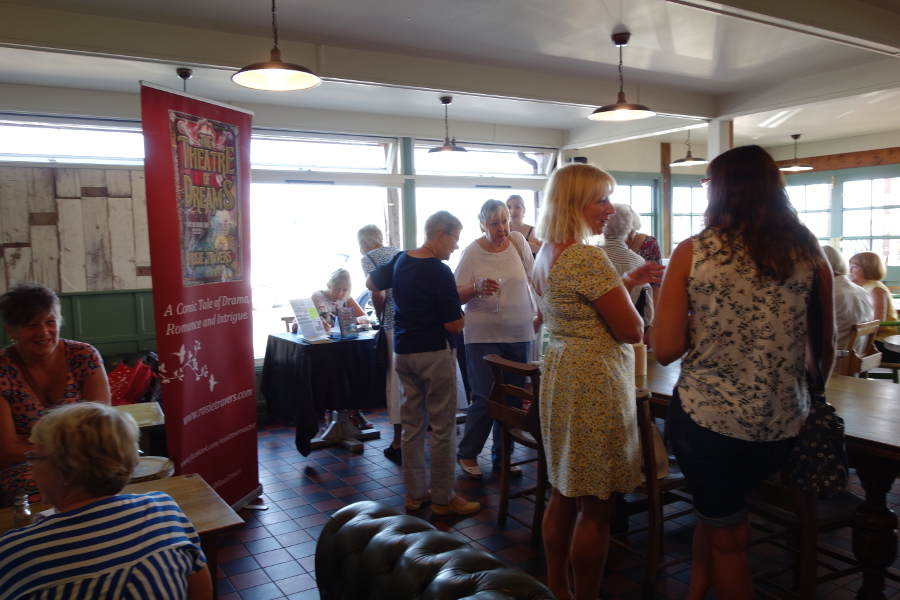
Wednesday evening saw the launch of Rosie Travers’ debut, The Theatre Of Dreams. Held at the Boat House Cafe in Swanick, just a few miles from Southampton, it was a lovely setting – casual, with the marina surrounding us, and the weather was blissful. It was also packed – this photograph was taken very early on and does the evening no justice.
I met Rosie a couple of months ago at a local author meet up. She has had an interesting journey to publication; her first manuscript was accepted by a small publisher, but only on the condition that she changed the book to suit their house style and any future books followed a pattern. The book would have required a lot of rewriting. Before making her decision as to whether or not accept the offer, Rosie sent a pitch and then the first three chapters to a big publishing house. Whilst they didn’t take her on they said they liked her writing and so she rejected the offer she had had, choosing to carry on looking.
That book is not published but Rosie found a publisher, Crooked Cat, and The Theatre Of Dreams was taken on.
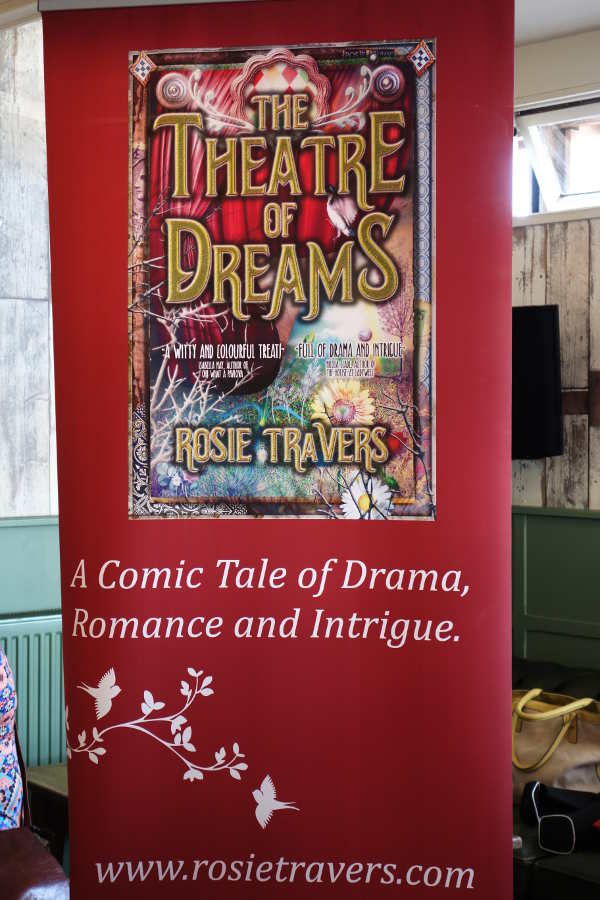
Rosie was inspired by the history of Lee Tower, a structure that no longer stands. Situated in Lee-On-Solent, a place the author rightly states isn’t well known beyond those who live nearby (it really should be more of a tourist spot, it’s lovely), her fictional version in the equally fictional Hookes Bay earned her an article in a local paper where Lee Tower was accounted for. The book as a whole is about a down-on-her-luck actress who is invited to take over the running of a former dance academy from a terminally ill 80 year old, whose invitation is not as nice as it seemed – the Lee Tower complex boasted a ballroom and cinema among other venues.
I’m yet to read the book in full; I bought a copy and have browsed through it; I’m looking forward to it. Rosie has a very good writing style and a knack for opening sentences. The very first is:
I met the man who orchestrated my downfall in a Soho nightclub.
She carries on in this strong manner for the next few chapters, making the most of the concept of good openings. I can feel a first analyses post coming on…
Curious Arts Festival 2018: Friday
Posted 1st August 2018
Category: Events Genres: N/A
1 Comment

Disclaimer: I was invited to cover this festival on a press pass.
For the first literary event, Emma Healey spoke to Georgina Godwin, mostly on the subject of her recently released second novel, Whistle In The Dark.
Speaking of her relevant history, Healey started with the time she was a student of book binding. At that point she had decided she was never going to be a writer and didn’t want to do something academic as a career. This feeling came as a result of the depression she suffered in her teenage years1. She went on to do an MA in Creative Writing.
In the year between the publication of Elizabeth Is Missing and her journey writing her next book, Healey’s life changed substantially. She got married and had a baby – she wrote whilst her daughter was new born. On this subject, she said it was stressful, but her experiences hadn’t changed her perspective as a writer, instead they had given her nuggets of ideas she could use in her book.
The author had wanted to include teenage depression in this book without referring to her own experiences; she didn’t want to write about the illness from a teenage perspective. She thought it would be interesting to write from the mother’s point of view, and inform that point of view with the teenager’s thoughts and feelings.
Looking at social media, which plays a part in the book, Healey pointed out that the exploration she wanted to do was easier when written from the perspective of someone to whom it was alien, and so she chose the mother, Jen. She was interested in the idea of Jen looking at daughter Lana’s online accounts and thinking there would be information there that would help her understand her.
Between readings – Whistle In The Dark is written in short chapters/vignettes – we also heard about the inspiration for Elizabeth Is Missing: one of Healey’s grandmothers suffers from dementia; sparking the idea for the book, she had asked if her friend was missing. The rest of the content was inspired by Healey’s other grandmother, who doesn’t have dementia.
Healey doesn’t write chronologically; she stated that this works for her but it is inefficient. Finishing books is difficult. She prefers as characters ‘ordinary people’ who have great things happen to them than characters who start the book in a great position.
After a very welcomed ice cream from the Purbeck van (they warrant a shout-out because they were lovely in general, and on the last evening gave me a serving of my favourite for free), I popped into Jamie Reid’s discussion about Patrice des Moutis, an insurance businessman who was a compulsive gambler in the 1950s to 1970s. With a backlist including a couple of books about horse racing, Reid is well-read on the subject of gambling as a whole. (His book on des Moutis is Monsieur X.)
Reid spoke of a man hounded by the French government and the media, who would have found it easier to do what he did (he was also a gangster) because of his looks and charm. His wife came from a respectable background and was uneasy at first by the idea of gambling but then starting putting bets on for him. Of gambling in general, the writer said that online gambling poses huge problems for society, that it’s too easy to spend more money when you’re doing so on a phone. The change from deciding yourself to letting a machine choose for you is sad.

Whilst the children got bedtime stories, the evening’s entertainment for adults began with comedy and continued with some fantastic music in the Gorse tent. I stayed for the first set performed by bülow, lowercase intentional, who I’d describe as somewhere between Katy B and Dua Lipa vocally and, at least live, not too far from Ellie Goulding. (Studio recordings sound more like Lipa and Anne-Marie.)
For the first afternoon at the festival it was spot on. Enough things happening to ease you into the weekend and get you excited about the rest of your time at Pylewell.
Footnotes
1 Healey was almost sectioned for depression. She had made a number of suicide attempts and her doctor had recommended a hospital; she was turned away because it was for adults (Walsh, 2018).
Online References
Walsh, Rowena (2018), Author Emma Healey draws on history with depression in new book, Irish Examiner, accessed 1st August 2018.
Curious Arts Festival 2018: An Overview
Posted 24th July 2018
Category: Events Genres: N/A
Comments Off on Curious Arts Festival 2018: An Overview
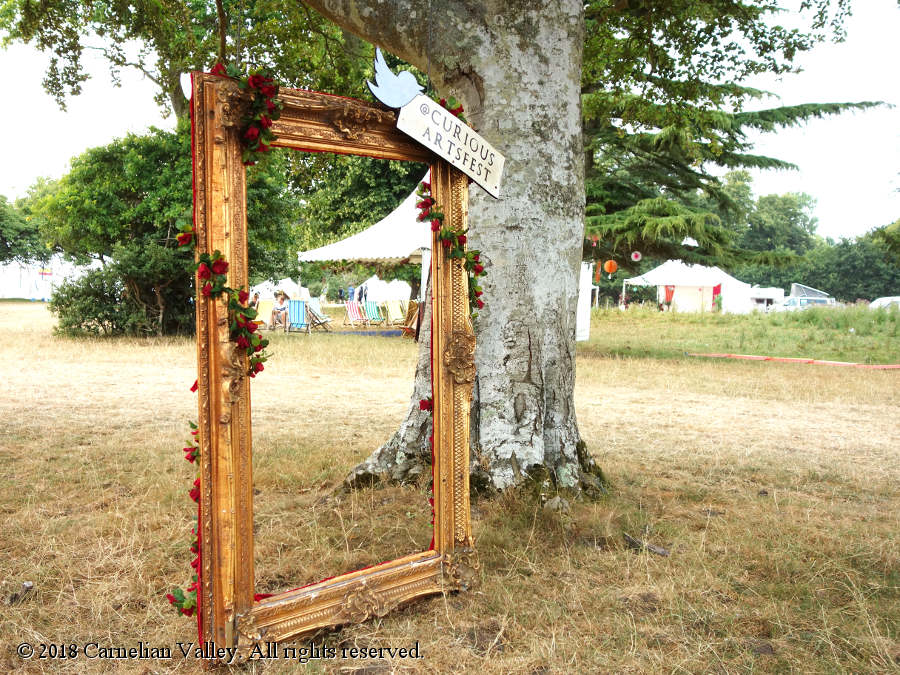
Disclaimer: I was invited to cover this festival on a press pass.
This year’s Curious Arts Festival took place over the weekend at Pylewell Park in the New Forest, an estate that opens its gardens to attendees, and its house to the speakers, each summer. Organised for the first weekend of the summer holidays, Curious is an intimate luxury boutique festival that offers interesting talks, workshops, and lifestyle-related classes for the whole family, and positively welcomes well-behaved dogs (who are in turn welcome to heckle the comedians if they so wish, and did so on Sunday). From Friday afternoon to Monday morning (technically Sunday night as that’s when the last event takes place; on Monday morning everyone packs up and leaves) there were a great variety of things happening, enough that I was still discovering new things to do late on the Sunday. Numbers are in the hundreds, everything is within a couple minutes walk – generally under a minute – and the festival is such that if you wanted to come without going to any of the programmed events, you would have just as good a time.
I last attended the festival in 2016. It has grown since then in a lovely, organic way. The intimacy of the festival has not changed; the same relaxed nature remains, and the space is the same.

And these are perhaps the best features of the festival when looking at it from a general viewpoint – at Curious you buy a day or weekend ticket that entitles you to access all events that day or every event in the programme respectively. You bring your tent, caravan, or choose to glamp, and then everything else is there for the taking. Want to attend part of one talk and then saunter over to another? Absolutely fine. Want to bring an ice cream or burger with you? Go ahead. Events have a listed start time but these are not strict by any means and the set-up means you can be very early or a bit late. The speakers wait a few minutes for people to arrive.

In that regard, something I noticed this year, that was confirmed when a fellow attendee brought it up in conversation, was the attention to detail of the scheduling. Ninety percent of the events I – and she – wanted to attend, did not conflict in their timings with others. Evidently a lot of time was spent on thinking about what people would like to see and it had an excellent result. (This is not to say previous years did not have a good schedule because they did – it’s just that this one stood out.)

Just like the other subtle changes, the genre of the festival has broadened. Literature, comedy, and music are the biggest elements – are the ones with scheduled events – and have been before, but the previous leaning towards literature has moved to a more equal balance between the three. There were fewer literary talks than in 2016, but it wasn’t by much, and the extra variety of events created by the balance rounded the festival off nicely.
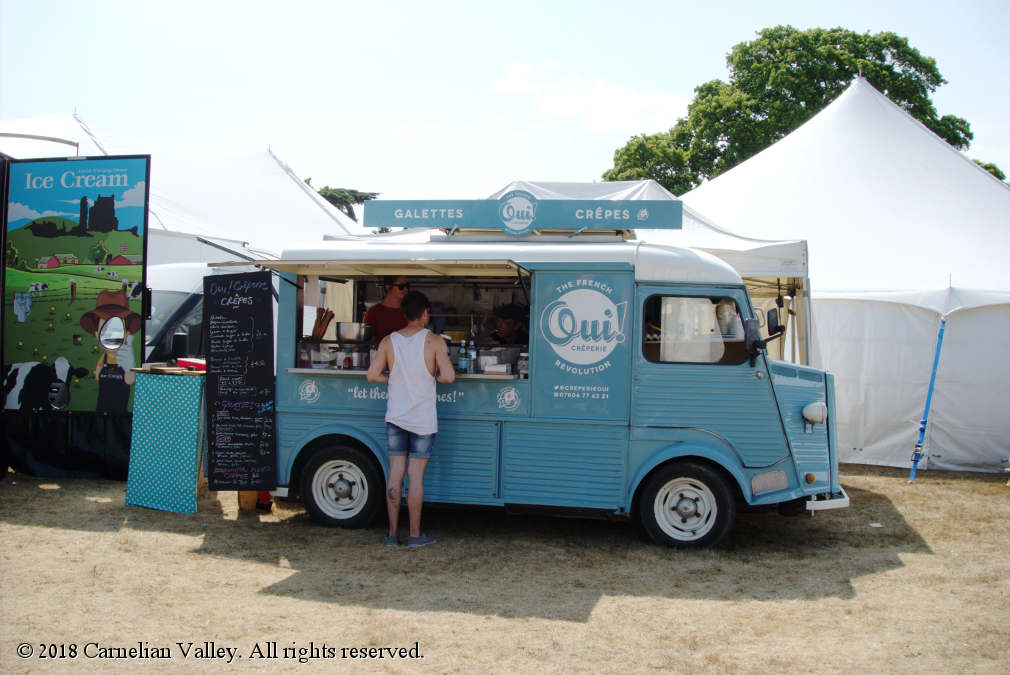
Outside food is not permitted but there is a good range of food vans and kiosks to purchase from. The festival supports all sorts of diets and food choices. This year the burger vans jostled for space with the Thai cuisine, neighbouring a fish and chips vendor, a Vegan burger option, and gluten-free choices. This year the crepes were sweet, but also savory. There were all-natural ice lollies, the Purbeck ice-cream that powered my afternoons, a number of bars, and very, very, good coffee. The festival as a whole is eco-minded, with more recycling bins than ones labelled ‘landfill’ and a good few food vendors using recyclable products.

Away from the main events, bohemian clothes stores, craft workshops, and giant versions of dominoes and Jenga, sat the Kanga Spa which offered morning Yoga, meditation, massages and other therapies. They also held tea ceremonies which I was very tempted by. They arrived with their very own teepees – you had to bend down to get into the reception – and proved very popular, their set-up its own little sanctuary, near enough the main stages for you to feel part of the festival, but far enough for a bit of quiet and privacy. Unlike 2016, where the options were more integrated, Kanga is its own outfit with training courses in India and events at the London School of Tea.
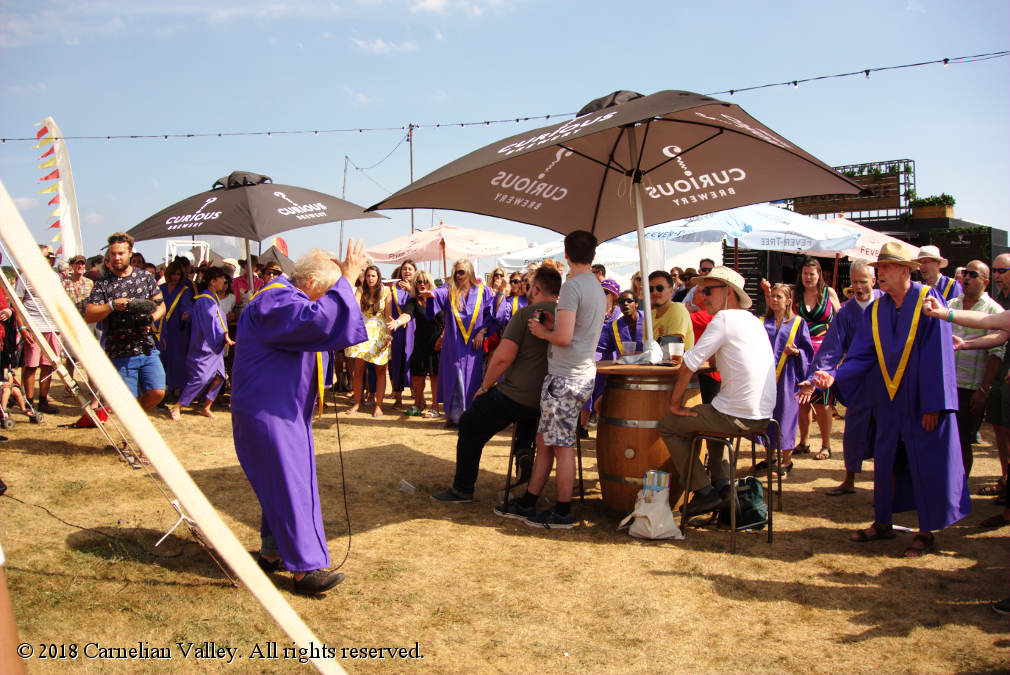
By mid Saturday almost everyone was in floaty clothing and shorts, and flower garlands adorned heads. Paul Blezard, a regular speaker at Curious and otherwise, said that at the festival it was either pouring with rain or burning hot. This year, in keeping with the UK heatwave that’s well into its second month now, it was scorching.

On Saturday and Sunday mornings, Blezard presents a round up of the days newspapers along with guests, and this year there was a similar round up for children. Children get their own tent – during the festival this morphed into two tents (extra tents and event spaces slowly increase over the weekend), bedtime stories every night, craft activities, mini adventures (for example I came across a man dressed as a stereotypical cook leading a bustling crowd of children around the site), and a couple of talks.
And speaking of mini adventures, this year the dogs had a moment to play with each other and perform tricks. (Owners are asked to keep their dogs on leads throughout the festival.)

For book lovers, the genre tends to be literary and poetry, whether contemporary, historical, thriller and so on. Comedy is a mixture of well-known names and up-and-coming artists. The music is very broad – folk, acoustic, and then there are quirky choices and well-known stars.
There is a uniqueness to Curious that makes it one to seriously consider attending. The size, the setting, and the nearness of everything (even your tent is only between a minute and 3 minutes walk away) make it stand out from the rest. I highly recommend it. Next year’s date is 19-21 July. Tickets and more information will be available from the website.

A note about access – it isn’t great due to the setting (some of the fields have lots of potholes), but people do visit with scooters and sticks and travel around the site at a fair speed. Chairs in the tents can be moved to make space for a wheelchair. In the largest tent, where the sound equipment required its own stage at the back, attendees in wheelchairs were able to park up next to the engineers with an unobstructed view of the stage.
Event Report From The Host: In Conversation With Claire Fuller
Posted 18th May 2018
Category: Events Genres: N/A
2 Comments

Yesterday evening saw our first event at Cobbett Hub & Library in the Bitterne Park area of Southampton. Claire Fuller joined us and told many wonderful stories including the inspiration that led to Swimming Lessons (notes she and her husband left around each other’s houses), the influence of Kate Chopin on the same book, and the story of a young boy that helped inspire Our Endless Numbered Days. (Of that book she also spoke of the way the survivalist subject was written – having discovered there were no cults in Britain in 1976, the year the book begins, she brought in a fictional American.)
We had some wonderful questions, including one that led to Claire telling us about completing NaNoWriMo with one word over the requirement, and another in which she described her method of working – writing, going back and editing, and moving on.
The library proved the perfect setting, the panelled interior and wooden bookcases full of texts providing a nice colourful backdrop; all original 1930s Art Deco. We’ll most likely be making it our long term home. Many thanks to Claire, the library, and the Friends of Cobbett Road Library.
Claire’s next book, Bitter Orange is out on 2nd August. With only a few pages left to read, I can fully recommend it.


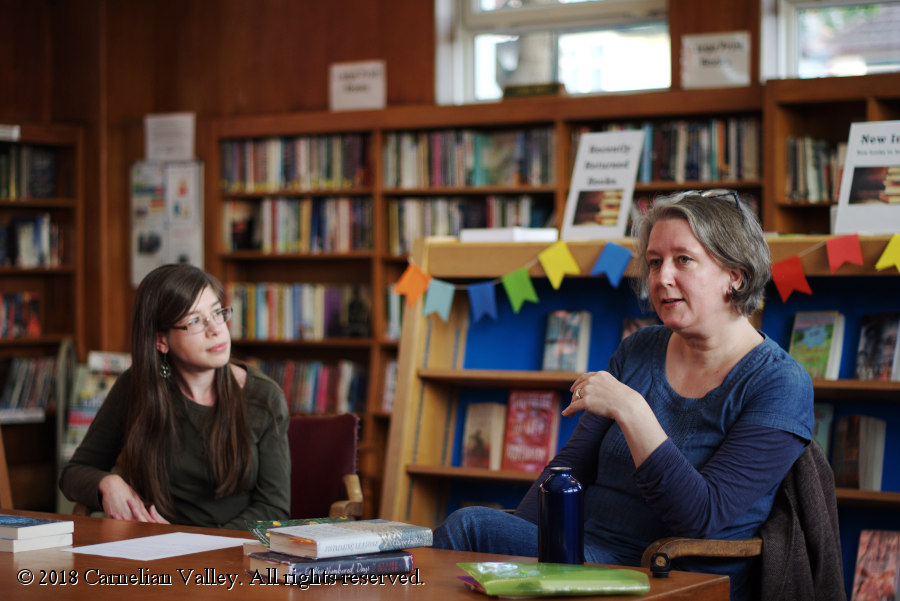
A Jane Austen Evening: Historian Cheryl Butler At Cobbett Road Library
Posted 12th March 2018
Category: Events Genres: N/A
1 Comment
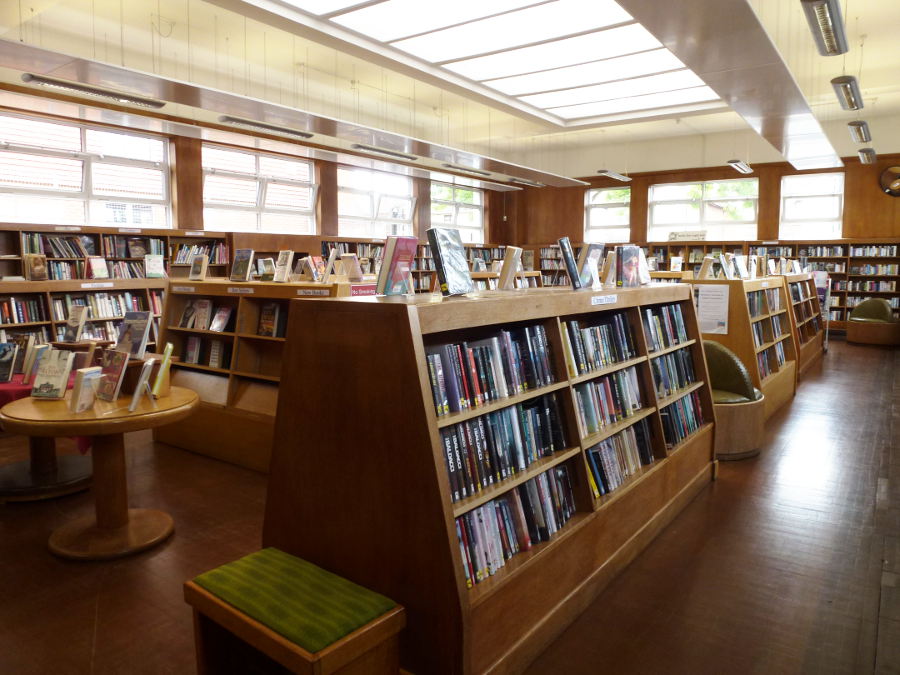
We have in Southampton our own Jane Austen expert – a historian who knows a great, great, deal about the history of our city, too. Cheryl Butler is well known in Southampton and gives many talks, is a writer of local history books and theatre performances, and guides walks in the medieval areas of the city.
On Thursday evening, Cheryl spoke to those gathered at Cobbett Road Library, a community hub in the suburb of Bitterne Park. Now run by a small staff and volunteers, and championed by a great Friends group, it is one of if not the oldest standing library in the city, inhabiting a building that was created in 1939 expressly for the purpose of book lending; decorated still by its original wood paneling, it encompasses a stunning lobby that is the nucleus, the main library to one side, and a community room and children’s library to the other.

Cheryl came to the library to give her Jane Austen & Southampton Spa talk and whilst I believe everyone expected to leave having learned quite a bit, the sheer amount of information Cheryl knows was something else. Reason being – there’s not much known generally about Austen’s time in Southampton, indeed it’s completely overlooked by her time in Bath and Chawton, yet she visited and stayed in Southampton three times over the course of her life and there is good reason to believe she preferred this city to Bath. Living in Southampton, one learns a bit just by walking around and patronising the city centre – everyone knows that Austen stayed at the very haunted Dolphin Hotel near the sea’s edge, and that she stayed in a house the grounds of which were later rebuilt upon to become what is now a pub. There are other plaques baring information near the water’s edge and it’s fairly well known that she liked the ruins of Netley Abbey.
Jane first visited Southampton when her sister Cassandra’s school mistress moved her school to the city. Jane joined them; the school was based somewhere on the High Street. Cheryl believes that Jane’s talk of a similar-sounding school in Sanditon may point to an influence. Due to the movements of the military at the time – the various wars that were going on – there was a lot of disease about and Jane, Cassandra, and their cousin caught Typhus. That was the end of the first visit.
On the eve of her 18th birthday, Jane returned to the city, staying with relatives. These relatives were rich, at the upper end of society, and had connections to the East India Company. This was the visit during which the author danced at the Dolphin Hotel, in the ballroom which stretches across the first floor. (William Thackeray is also known to have visited the hotel.) Jane’s relatives are buried at Pear Tree Church, across the river from the city centre (Southampton spans two sides of the Itchen).

Jane’s third visit happened when her brother, Francis, moved to the city. The Austens got a property together in Castle Square; a gothic castle had been built by the Marquis of Lansdowne with expensive houses surrounding it, the most expensive of which was rented by the author’s family. The castle no longer exists (the ruins remaining in the city are of the medieval castle) but the area is still called Castle Square. Jane wrote about their garden; she grew a flower that William Cowper, her favourite poet, had composed a work about. (Cowper was another visitor to Southampton.) The family grew strawberries. Jane enjoyed attending a theatre on French Street, a place that would later host her favourite actress, Sarah Siddons – though Jane did not see her perform here.
Cheryl believes it’s possible that we don’t know more about Jane’s time in Southampton due to Cassandra’s burning of her letters after she died. [Full disclosure: I haven’t included everything in this post.] We have some of her letters which include notes on Southampton and given this, it’s likely there were originally more. Cheryl also posed the interesting question – if Jane’s letters that include her dislike of the upstanding vicar of All Saints Church were not burned by Cassandra, then what in the world did the burned letters contain?
We have no evidence that Jane worked on her novels whilst in Southampton, but do know that she corresponded with her publishers for the return of a manuscript that they had yet to do anything with. That manuscript was ‘Susan’, which later became Northanger Abbey.
Do you enjoy learning the history of where you live?












